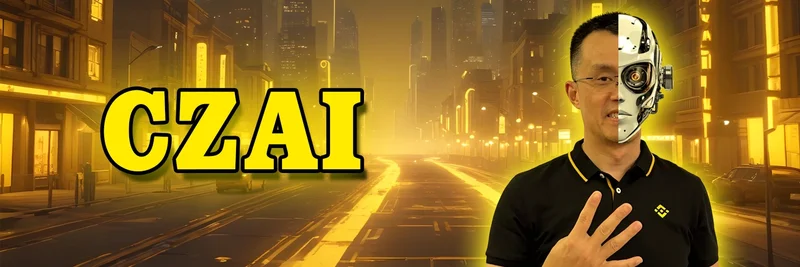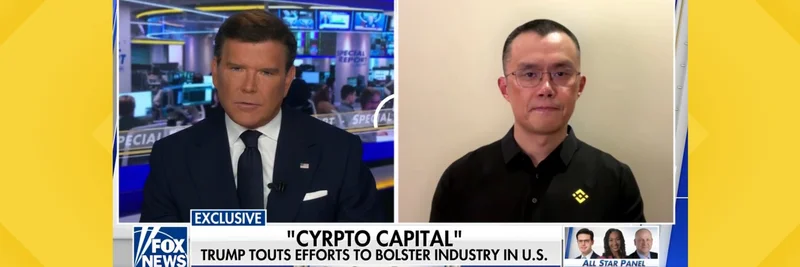TL;DR
- There’s confusion around “CZAI” on BNB Chain because a separate “CZAI” also exists on Solana with a different address and very low liquidity.
- On BNB Chain, the contract 0x650f0d19070d2853a01dddcb8bf533aba4577041 shows limited or inconsistent visibility across trackers, suggesting it’s either obscure, inactive, or not broadly indexed.
- Treat this as a high-risk, early-stage/meme-style asset until more official information appears. Always verify on-chain before interacting.
What we found on BNB Chain
Two research passes turned up conflicting signals:
- One search did not find a recognized, active token named CZAI at 0x650f0d19070d2853a01dddcb8bf533aba4577041 on BscScan, implying the address may be a non-token contract, inactive token, or simply not indexed under “CZAI.”
- Another pass identified a token page and treated it as a BEP-20 deployment on BNB Chain but still flagged limited liquidity, lack of listings on major trackers, and no official documentation.
What this means in plain English: even if a token exists at that exact address, the project is not widely recognized, verified, or liquid at the moment. That’s common for nascent or meme-style contracts, but it raises caution flags for traders.
You can directly check the contract here:
- BscScan (token page attempt): https://bscscan.com/token/0x650f0d19070d2853a01dddcb8bf533aba4577041
Don’t confuse it with the Solana “CZAI”
A separate “CZAI” exists on Solana with the address A3iBytCrqUr9kghHsLuPqMaXJrUJn6zMF81UHLdczai. It’s low-liquidity, unverified on registries, and unaudited. That Solana token is unrelated to the BNB Chain address above. Always match the contract address to the right chain before you trade.
- Solana official site: https://solana.com/
What “CZAI” might be trying to do
Based on naming alone, CZAI might be leaning into the AI narrative. Projects like this often claim:
- Access/payment for AI tools
- Governance for an AI-themed protocol
- Rewards for community contributions
However, there’s no verified whitepaper, website, or social channels tied to this BNB address yet. Without docs or a team profile, all utility claims are speculative.
Key risks to keep in mind
- Transparency risk: No official website, no verified team, no audits.
- Liquidity risk: Weak or nonexistent liquidity can make entries/exits expensive or impossible.
- Scam risk: Early, anonymous, or meme tokens can hide predatory mechanics (e.g., high taxes or honeypot behavior).
- Listing risk: Absent from major aggregators (CoinMarketCap/CoinGecko) often means limited visibility and due diligence.
How to verify the contract yourself (five-minute checklist)
Use this simple flow to protect yourself:
- Confirm the address and chain
- Double-check you’re on BNB Chain and using the exact address 0x650f0d19070d2853a01dddcb8bf533aba4577041 on BscScan.
- Check basic contract health
- Is the source code verified on BscScan?
- Is contract ownership renounced or held by a multisig?
- Any suspicious functions (blacklist, max wallet, arbitrary mint)?
- Inspect taxes and trading safety
- Review transfer functions for buy/sell taxes.
- Use security checks on trading dashboards to detect honeypot behavior.
- Study holders and token distribution
- Look at “Holders” on BscScan. If a single wallet or the deployer holds a huge share, that’s a red flag.
- Examine liquidity and locks
- Identify whether liquidity pool (LP) tokens are locked with a reputable locker and for how long. No lock or short locks increase rug risk.
- Cross-check community and announcements
- Search for an official website, Twitter/X, Telegram, or docs. Lack of any presence is a caution signal.
Where to check price and liquidity (if/when trading is possible)
If liquidity exists, you can explore and compare across multiple tools:
- PancakeSwap (BNB Chain DEX): https://pancakeswap.finance
- GMGN.AI token dashboard (BNB): https://gmgn.ai/bsc/token/fV1R5sZ5_0x650f0d19070d2853a01dddcb8bf533aba4577041
- BscScan token page (for on-chain holder/liquidity checks): https://bscscan.com/token/0x650f0d19070d2853a01dddcb8bf533aba4577041
Tip: If you don’t see a credible liquidity pool, don’t buy. Even tiny buys can get trapped by taxes or honeypot code.
Quick glossary
- BEP-20: BNB Chain’s token standard (similar to ERC-20 on Ethereum).
- Liquidity pool (LP): Token pairs (e.g., CZAI/BNB) that enable DEX trading. LP locks help reduce rug-pull risk.
- Honeypot: A token you can buy but can’t sell, often due to malicious contract logic.
- Renounced ownership: The deployer gives up control over the contract, reducing the chance of future changes.
Bottom line
CZAI at 0x650f0d19070d2853a01dddcb8bf533aba4577041 on BNB Chain currently looks obscure with limited public verification, uneven tracker visibility, and no official communications. Meanwhile, a different “CZAI” exists on Solana—don’t mix them up.
If you’re considering any interaction:
- Verify the exact contract on BscScan.
- Confirm LP depth and locks.
- Use trusted dashboards like PancakeSwap for routing and GMGN.AI for rapid risk checks and market views.
- Never risk funds you can’t afford to lose. This content is for research and education only, not financial advice.



